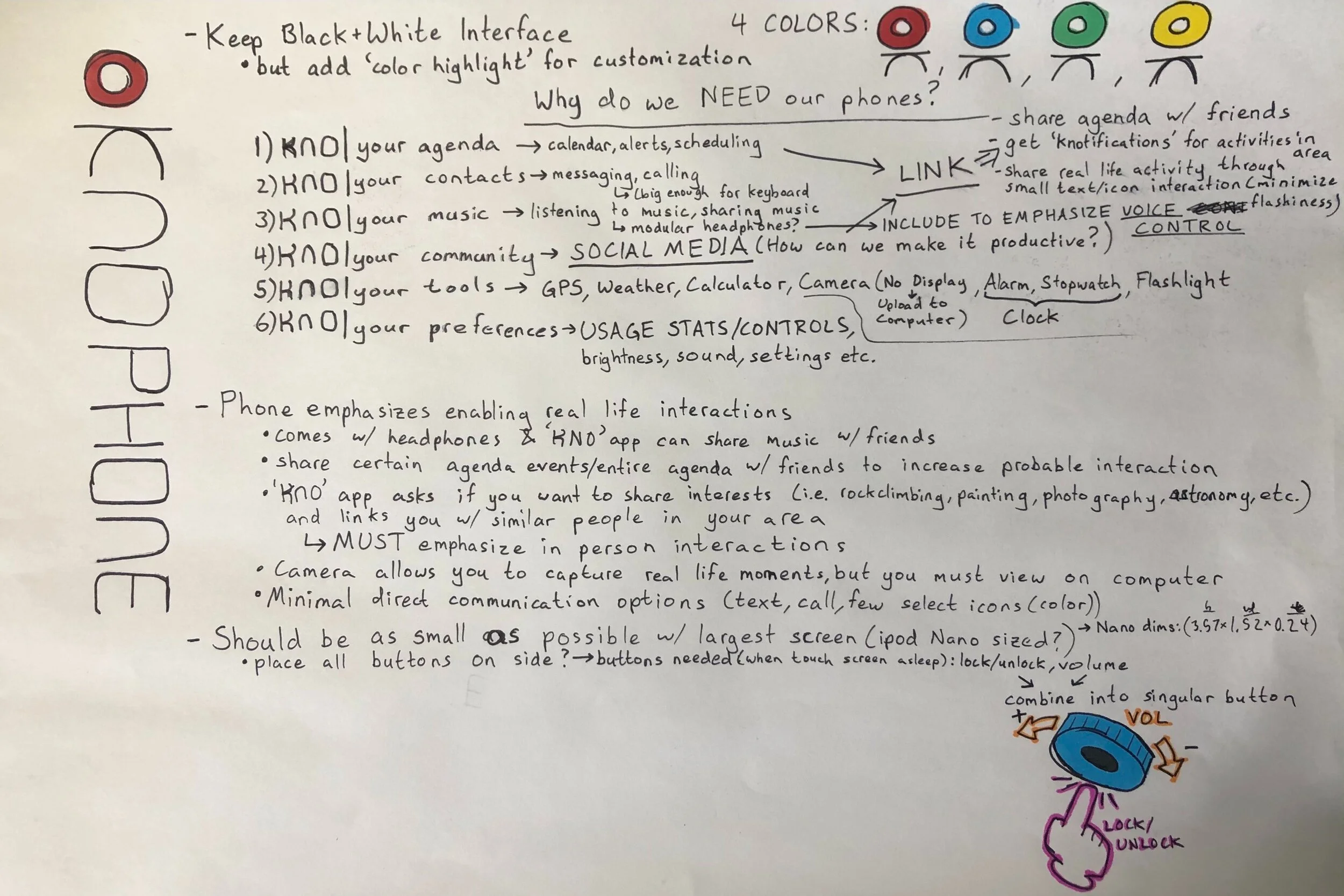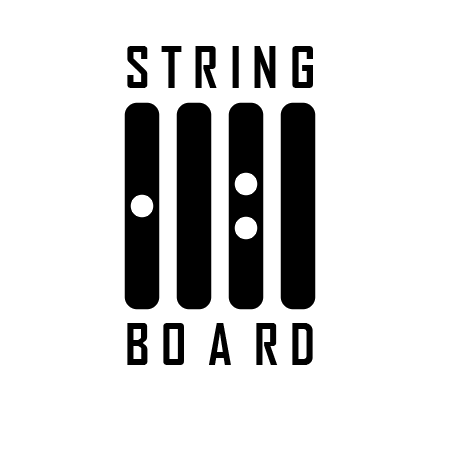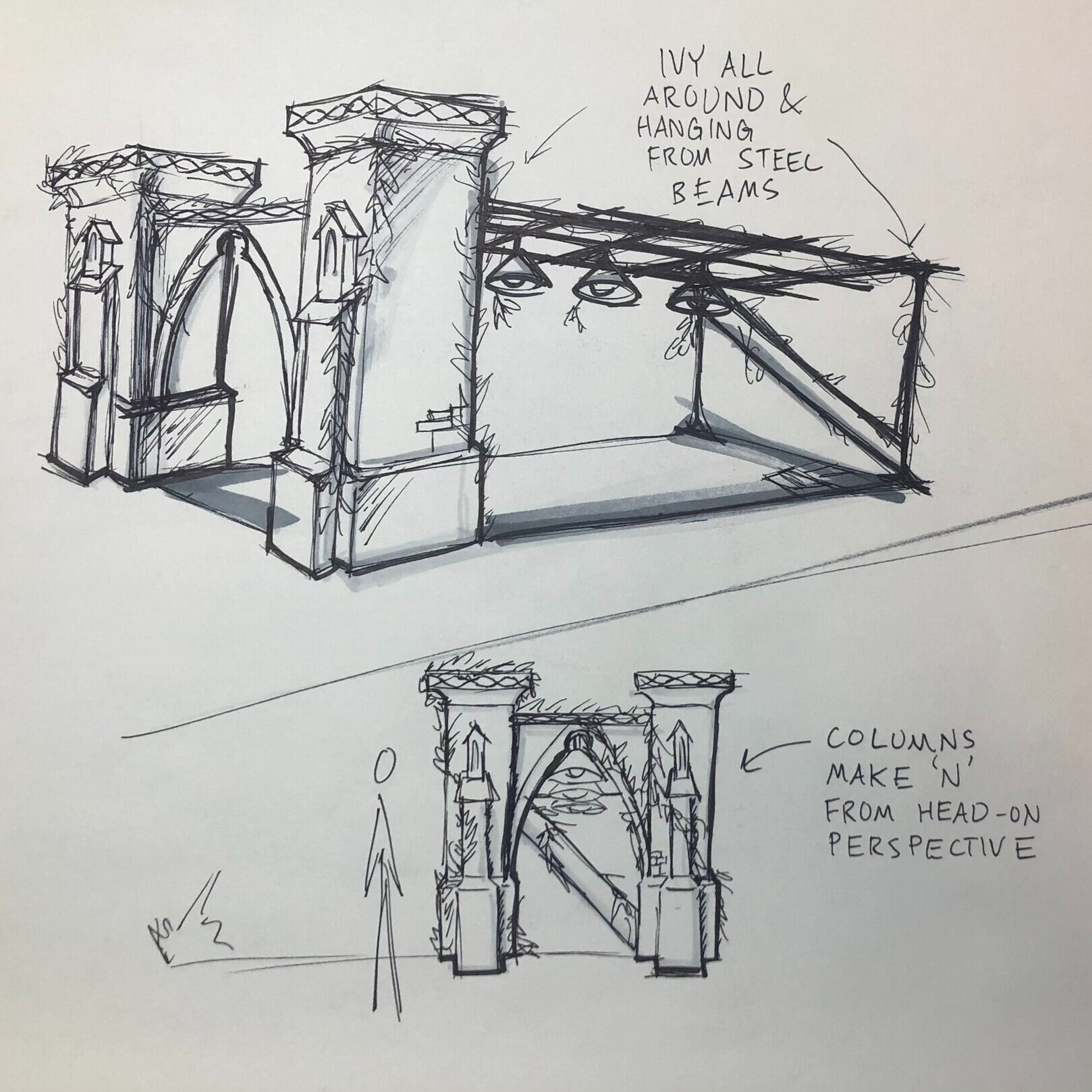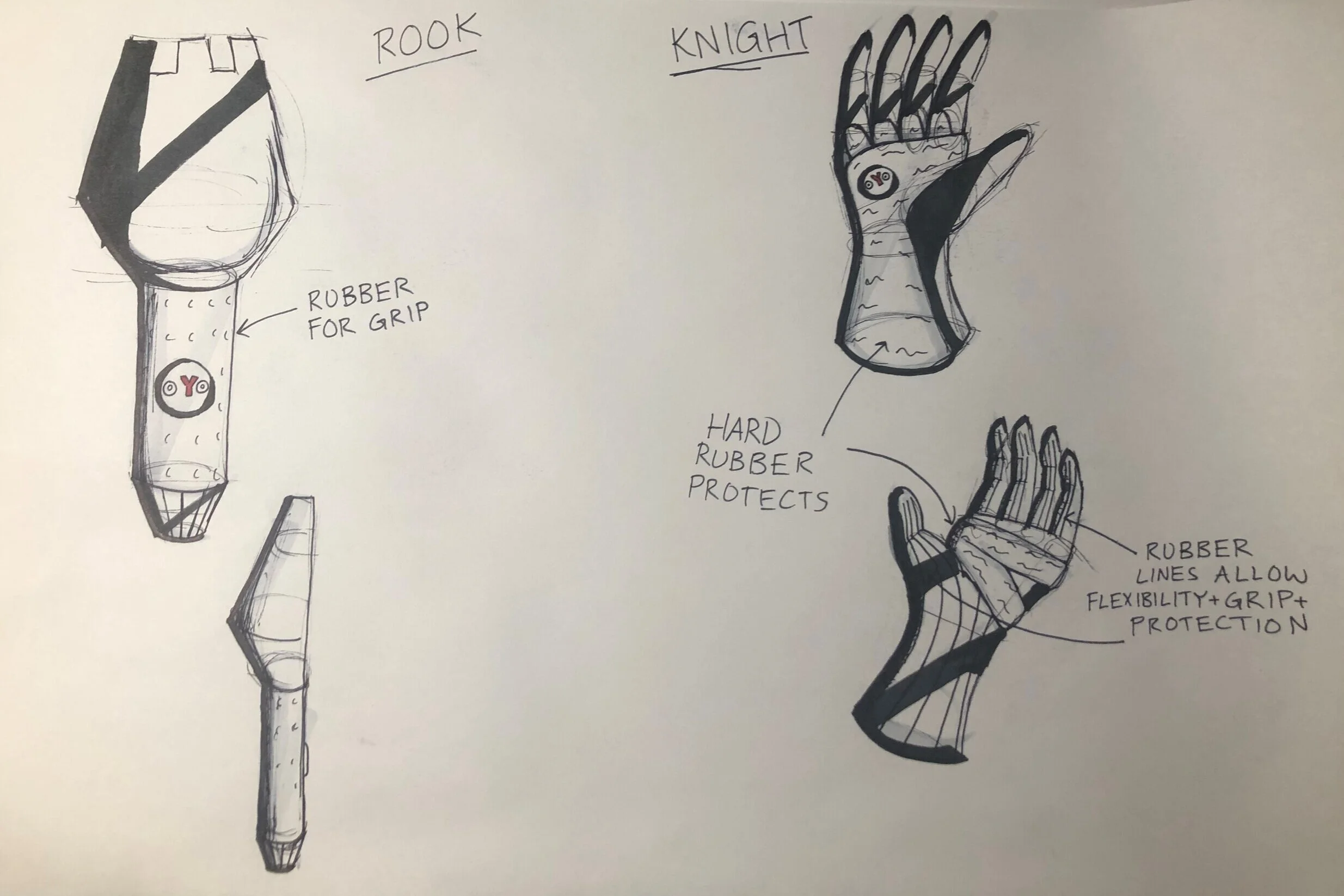Knophone
Acting as a design consultant for Light company by taking their meaningful manifesto and creating a new product line that upholds these ideals, the Lightphone metamorphized into the Knophone.
Objectives
In rebranding the Lightphone, I wanted to strike a happy middle ground between the expansively useful smart phones we know today and the bare bones functionality of the current Lightphone. After conducting some market research, I found most consumers were not attracted by the Lightphone because of the necessity and convenience of smart phones as pocket computers. My redesign focused on three key objectives: 1) Strip the modern smart phone down to its bare essentials 2) Justify offering LESS to the user 3) Emphasize the Lightphone manifesto through real world activity
Results
The Knophone is a Bluetooth smart phone add on that keeps what you love about smart phones while chopping off the excess features. The device incentivizes real world activity and interaction through a game-like social interface inspired by Tamagotchi’s, allowing you to track activities and achievements in real time and compare and participate with friends. The built in camera and headphones allow you to leave your smartphone at home for the day while still being able to share the things you love with the people you know, so you can get away from the screen and get back to ‘Kno’-ing yourself.
Designing My Dream House
Dreaming too Big
When prompted with ‘Bringing my Inner Designer to Life’, I immediately knew I would create the layout for my dream house. I had been enjoying the previous summer landscaping at my Grandpa’s house in the Berkeley Hills of the SF Bay, and constantly flirted with the idea of knocking it down and starting all over. So I did (on paper at least). However, as the layout of my extravagant future mansion developed, problems began to rise.
Sizing Down
As my dream house began to develop further, my dissatisfaction with the project did as well. This was not bringing my inner designer to life; this was a display of extravagance, unethical consumption, lackluster critical thinking, and downright time wasting. I paused and revaluated how my inner designer would create their dream home by incorporating only what is necessary and important to them. The solution became clear as day; my dream home was a tiny house.
Less is More
The adjustment from upscale mansion to less than 20,000 square feet of floor space began with reevaluating my Big Rocks, or key areas of need in life. From there, I listed housing necessities and ensured each was profiled under need to verify it was essential to the design. Then began the sketching process, and finally a basic floor and design plan were created for the Tiny House. In the future, I’m hoping to continue the development of my dream home and even build it myself one day (maybe without destroying my Grandpa’s house).
My Future Hobby: The String Board
Ideation
In the future, what will playing guitar look like? To understand better, I delved into how other musical instruments are developing with the changes the digital age has brought. Instruments are becoming notably more accessible and portable to match our dynamic lifestyles. However, I can’t even take my guitar on a plane unless I want to pay for a whole extra ticket, and you may need loads of equipment or even multiple guitars to achieve a desired sound.
Application
The Stringboard is a MIDI guitar controller that you can keep in your backpack, pull out on a plane, plug into your computer, and get right to jamming. Unlike a MIDI keyboard, the responsive nylon strings of the Stringboard, along with the sleek body and digital compatibility, allow users to play with the slides, bends, and feel of a real guitar anywhere. The Stringboard also includes a ‘Lessons’ feature, inspired by the popular ‘Tap Tap’ apps, in which LEDs underneath the frets and strings indicate finger placements in accordance with the digital lesson, allowing anyone to learn guitar, whenever, wherever.

































